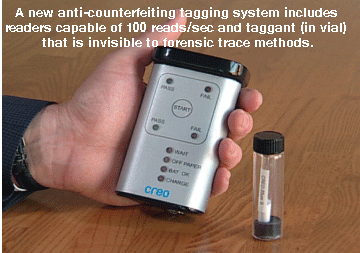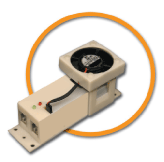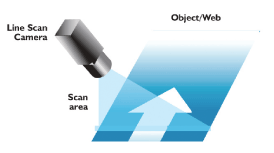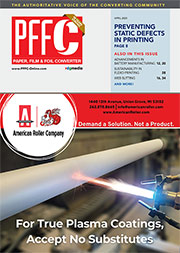Featured Stories
-
Advantages of Shear, Razor and Crush Web Slitting Techniques
When choosing a slitting method, many factors must be considered, including interaction with inspection systems. -
Revolutionizing Lithium-lon Battery Manufacturing Advances in Slot-Die and Electrode Coating Technology
As the global battery market surges toward an estimated $328 billion by 2028, innovations in manufacturing processes are becoming increasingly... -
Nordson Divisions Collaborate to Achieve Unprecedented Flat Profile Time
Nordson Measurement & Control Solutions (a division of Nordson Corporation) is a global leading provider of gauging systems for the film...
News | New Products
-
Morris Packaging to Add New KY Flex-pack Plant
Bloomington, IL-based Morris Packaging plans to build a new $60.9-million production plant in Marion County (KY), a project that will create 276 full-time jobs.
-
Press Belt Manufacturer IPCO to Focus on Engineering and Service Expertise
IPCO will use Ligna 2025 to highlight the service and support services it provides to press manufacturers and WBP producers alike.
-
INX promotes seven Executives to Vice President positions
INX International Ink Co. has announced the Board of Directors has approved the promotions of seven key people to Vice President positions.
-
Bimec and Flex CA Strengthen U.S. Market Presence with a new installation at Cello-Wrap Packaging Inc.
Bimec and Flex CA proudly announce a new milestone in their U.S. market expansion with the recent commissioning of a state-of-the-art slitter rewinder at Cello-Wrap Packaging Inc, located in Farmersville - TX.
-
New Era Converting promotes industry veteran Stephen Pickett to controls engineering manager
New Era Converting, an IPCO company, has announced that Stephen Pickett is taking on a new role as controls engineering manager.
-
Fedrigoni Announces New Slitting Center for Self-Adhesive Labels in Germany in Q4 2025
The Fedrigoni Group - a world reference in the manufacturing of self-adhesive labels, special papers for packaging and other creative applications, graphic supports for visual communication and RFID
-
Advancing Label Innovation Through Collaboration
Packaging is a physical representation of a brand’s identity, and label converters play an essential role in bringing the packaging experience to life.
Expert Advice
Brand Security & Authentication, Part 2
- Published: July 31, 2005, By AWA Alexander Watson Assoc.
Part 1 | Part 2
Forensically Invisible Brand Protection
Chemical analyses or mass-spectroscopy analyses can be obtained easily by anyone willing to pay $250 and send a sample of the material to be analyzed to any of the thousands of independent laboratories across the world. No credentials are needed except the ability to pay. In today’s high-tech counterfeiting market, this is how high-tech product fakers identify any covert anti-counterfeiting taggants they need to copy in a system to pass off their goods as the real thing.
In practice, any taggant that is present above 10 parts per million (ppm) is detectable by inductively coupled mass spectroscopy systems, and above 100 ppm is detectable by gas chromatography and even other simple chemical analyses. Product manufacturers are paying for advanced protection of the authenticity of their valuable brands, but until recently the counterfeiters have been a step ahead of them.
Invisible Tagging System
To overcome this major problem for brand owners, a unique tagging system has been developed by Creo, a sub. of Kodak, that is invisible even to forensic trace methods. This invisible system, Traceless, is used to provide covert, high-speed, machine-readable (readers are capable of 100 reads/sec), anti-counterfeiting features on their labels and packaging.

Most taggant-based systems require the taggant to be added at levels of 3,000–10,000 ppm in order to be reliably detectable for product authentication. The new taggant system, when added to paper, film, coatings, inks, or molten metals and plastics at
Additionally, the new system can track individual packages, bottles, or labels via an “invisible bar code”—a taggant image signature created by the positioning of the taggant particles, which is said to be a truly random pattern occurring from the fluid dynamics of printing inks, coatings, and papers into which these new taggants are added. The system reportedly is so secure that it cannot be reproduced, even by the manufacturer. This “bar code” acts as an invisible identifier for individual packages, bottles, or labels for tracking and tracing to militate against gray-market diversion.
The combination of these two powerful security factors has made this system attractive for many high-value industries such as prominent US drug manufacturers. Additionally—and critically—the necessary software database workflow for tracking and tracing individual items also is available. A brand manufacturer purchases the database system and is the only one with access to the company’s database of “official product codes.”
Secure RFID Antennae
RFID is today’s buzzword in terms of track and trace logistics systems, but concerns have been expressed that printed antennae are not completely secure. Their easily broadcast signal can be captured and counterfeited. The new invisible system has the ability to provide robust track and trace features similar to those of RFID—thanks to the taggant particle positioning that is unique to each package or label (the invisible bar code)—at a fraction of the cost of RFID.
Working with XINK Laboratories, a new generation of covertly tagged conductive flexo inks has been developed that confer the same degree of security on an RFID antenna as you would attribute to a banknote. The low-concentration taggants permit full authentication of every RFID tag using a simple pen-sized reader—and the RFID tag reading, ink properties, and print characteristics remain completely unaffected.
Just two examples of where there is interest today include unique identifiers on postage stamps that would enable tracking of individual pieces of mail from the purchase of the stamp right through to delivery to the addressee and on passports and other critical identity documents. The possibilities could be endless.
SUPPLIER INFO:
Creo, a sub. of Kodak—creo.com/traceless
PRODUCTS
Two Products Offer Protection
Sherwood Technology, Widnes, Cheshire, UK; +44 1606 837787; sherwoodtech.com
The DigiVU range of products reportedly provides sophisticated features for the protection of products, brands, and documents. The first product is Microread, which uses a combination of proprietary chemistry, a variable, tunable laser source, and precision control system to form a series of unique, overt, semi-covert features within a document. Also available is the DigiVU OVD, featuring a tilt-activated, optically variable device to apply an overt image on metallic substrates. The image changes from positive to negative when viewed at different angles to incident light.

Protect RFID Tags and Labels from Static
Simco Industrial Static Control, Hatfield, PA; 215/822-6401; simco-static.com
The fusION neutralizer is recommended for protecting RFID tags from damage by delivering powerful and balanced static control in a compact package that can be installed in places where typical ionizer designs do not fit. The tiny circuits of RFID tags may not be robust enough to withstand exposure to static charges, company explains. Protecting them requires an active (electrical) static eliminator that can provide relatively balanced ionization (probably less than 500 or 600 volts of ion current).
Security Inks Foil Counterfeiters
XSYS Print Solutions, Stuttgart, Germany; 800/328-7838; xsys-printsolutions.com
In a partnership with Microtrace, company offers a traceable, anti-counterfeit ink technology for the narrow web tag and label industry. Microtaggant security inks reportedly allow any printer to apply the technology easily to any printed materials using flexo or screen printing processes. The technology comprises a numeric code sequence in a multiple colored layer format, delivering multiple layers of security through a single microscopic particle. The inks are formulated with Microtaggant encoded particles that are certified and registered to each customer or application. Once a formulation is produced for a customer, it becomes their exclusive “fingerprint” and is never again used for any other application. The ink system is fully compatible with company’s UV products.
Coatings Aid Security
Starna Industries, Essex, UK; +44 (0) 20 8599 5115; starnaindustries.co.uk
Curecoat and Curecoat HV water- reducible primers are environmentally friendly, water-based coatings developed for high-gloss problems, problematic substrates, or low-dyne substrates. They are said to smooth variables and provide for uninterrupted production, thus making them well suited for security and brand protection. Curecoat coatings can be applied by flexo/rollercoat and gravure; Curecoat HV is applied by screen and litho print processes. Company says both dry quickly due to the low film weight, and treated substrates have a satin-like finish.

Verify Labels, Documents
Lake Image Systems, Fairport, NY; 585/421-9290;b lakeimage.com
IntegraScan provides secure printing industry with a line scan-based data verification/reporting solution that proves the integrity of piece-level production for continuous printing applications. Product images entire web/sheet with a single camera, providing verification in real time, even for multi-up applications. Capabilities include comparison of production to print file information; identification of missing/duplicate pieces; front/back matching; basestock verification; print quality inspection; data acquisition for ADF environment; pin number logging; and production integrity reporting. Designed for pharmaceutical/security labels, high-security forms printing, tickets, and more.
Part 1 | Part 2













